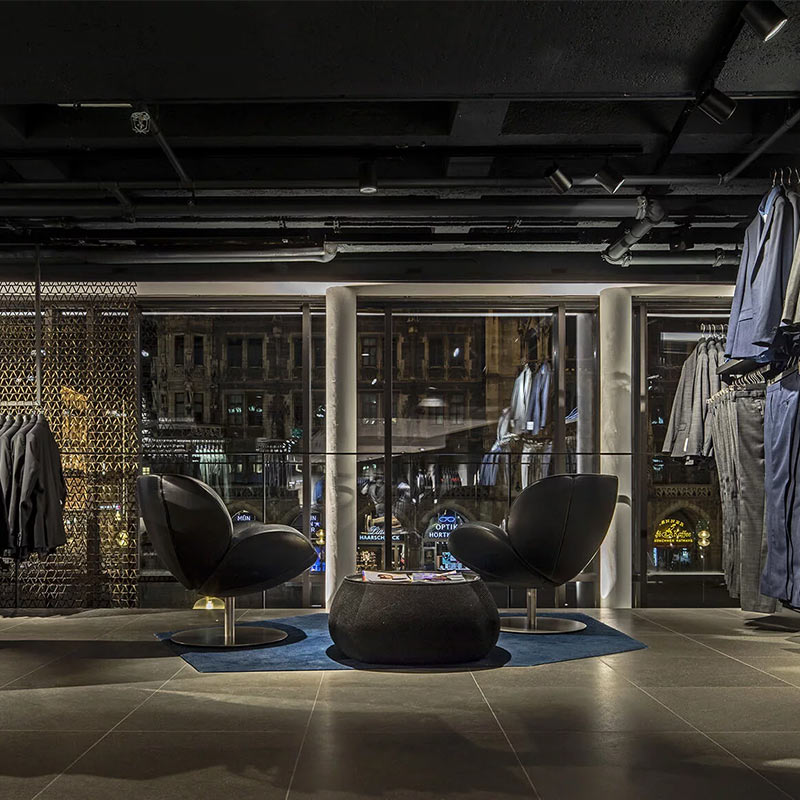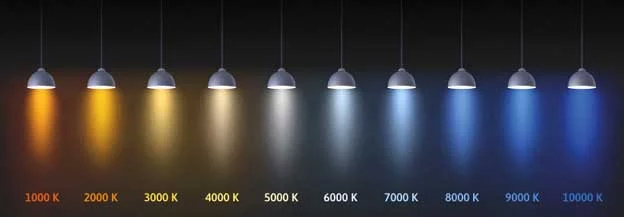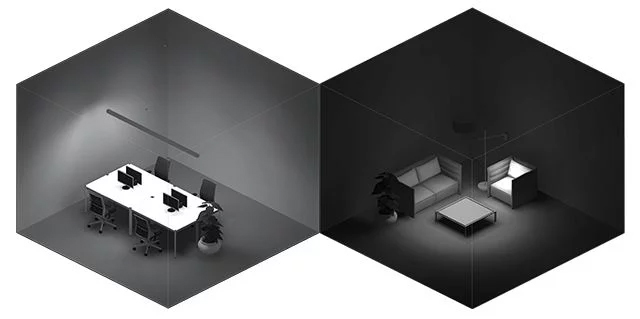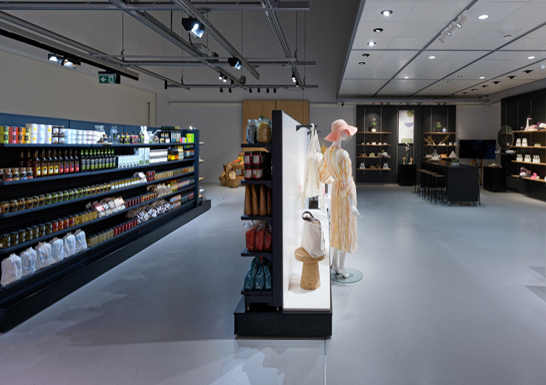Store Design: Feel the light

von Julián Monzón Pulido, Lighting Designer bei Ansorg
In retail, store design helps to arouse emotions that are closely linked to the brand, the products and the shopping experience. Lighting gives the store design character and is an important factor in shaping the customer experience. But how can a lighting concept be specifically geared towards this goal and the desired effect?
Lighting in interior design
The lighting in our living and working environment clearly shows the essential differences that are determined by the use and purpose of the space:
Offices generally require an active environment with focussed task lighting, while living spaces require a relaxing atmosphere with soft, warm lighting. In private interiors, for example, where the focus is on cosiness and comfort, a warm colour temperature is used.
Short: Every type of room, every goal and every associated emotion can be linked to a suitable lighting design.
Everyone can distinguish between cold and warm light
The change in the colour temperature of the light during the day can be seen and felt by everyone. It varies depending on the hour and the latitude.
In our latitudes, we have a neutral colour temperature of 3500 K–4500 K in the morning, changing to a cold colour temperature of 5000 K–6500 K at midday and ending the day with warm light of 1700 K at sunset. The colour temperatures influence our level of activity and relaxation. We can make positive use of this knowledge of human-centred lighting (according to the CIRCADIAN RHYTHM) with appropriate luminaires and lighting design.

Colour temperatures
The difference in the perception of light arises in the lighting schemes and makes a significant difference:
• In outdoor areas, uniform general lighting with a neutral/cold colour temperature (3000K–4000K) dominates.
• Private interiors, on the other hand, are often illuminated with a targeted warm colour temperature (2700K) to create a cosy and comfortable atmosphere. Living rooms, for example, need a relaxing atmosphere, usually with soft, warm lighting and optional accent lighting for reading purposes.
• An active environment with focused general lighting and neutral-–old colour temperature is typical for offices.

Brightness and effect: Workplace lighting and living room lighting
Perception and spatial character
Lighting has both a quantitative and a qualitative aspect. The quantitative aspect includes photometric values such as illumination levels (lux), contrast factors (Emax/Emed), consumption and energy efficiency.
However, the qualitative aspects of lighting can only be experienced through perception, which characterises the character of the room and the associated feeling. The character of the space is conceived during the planning process (mood boards, references) and the light must follow its intentions and character.
Qualitative aspects for a first-class lighting design
The quantitative assessment of light must be followed by a qualitative perception. This can only happen by experiencing the light in the room. This is because light with the same quantitative values can be perceived differently depending on room characteristics such as volumetrics (given by the room dimensions, furniture or elements that fill the room) and colour palette (surfaces and furniture colour).
We work with mock-ups!
Although the qualitative aspects of light can be described, their complexity and uniqueness can only be felt, seen and judged through perception. With our mock-ups, we offer precisely this experience, focussing on the details of the store design as well as the overall impression created by the lighting concept in the store. This is when we start live development with our customers. Different scenes and lighting concepts can thereby be perceived comparatively.
This can be, for example:
• Structure and texture of clothing at different beam angles, optics and reflectors.
• Colour saturation of fruit and vegetables with varying CRI (Colour Rendering Index)
• Gloss of a car paint or other surfaces under the selected light intensity.
• The impact of the entire lighting concept on the viewer
LichtRaum: The lighting concept in your store
In order to compare and evaluate lighting concepts live under realistic conditions, we have developed the Ansorg LichtRaum.
Here, we recreate the real store situation in the CI of your brand – and can realise a variable ceiling height of up to seven metres. In this test environment, we develop the best combination of illumination intensity, light colour, colour rendering and light distribution. The lighting solution is only finalised when everything is perfectly coordinated.

Ansorg LightRoom
With a workshop in Ansorgs LightRoom, we can map your respective store conditions and industry scenarios. Brilliant lighting quality, targeted product presentation and a customised lighting concept can therefore be developed and tested live.